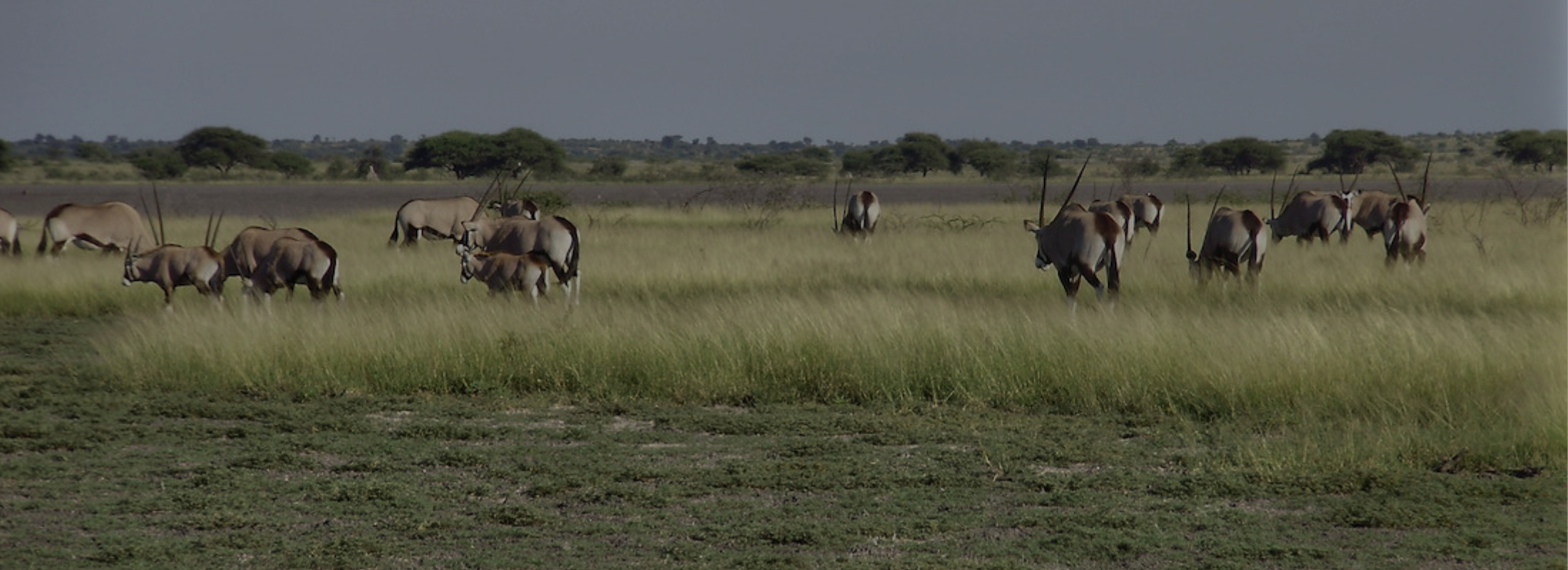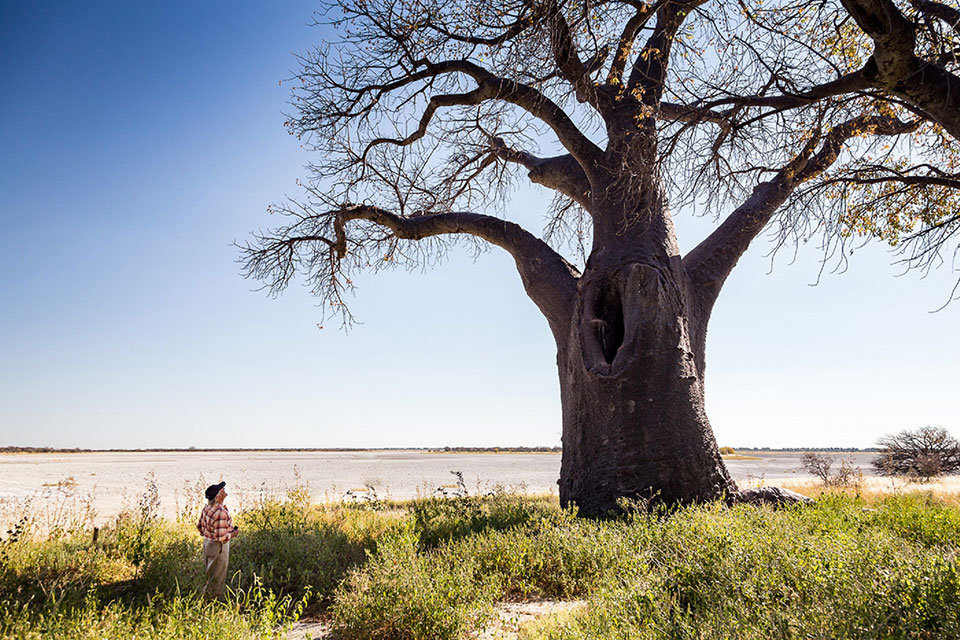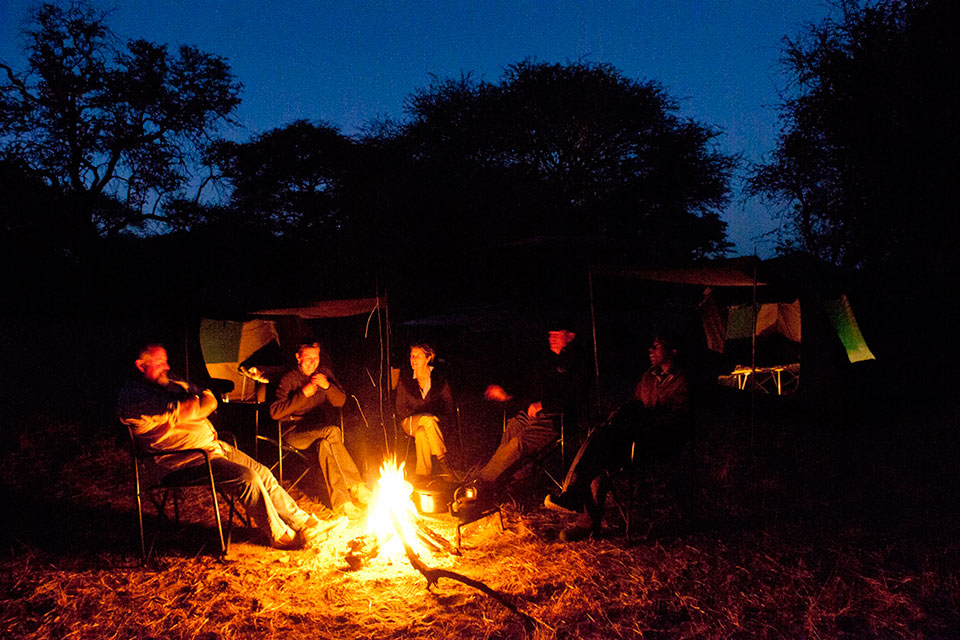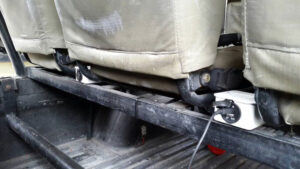
Kalahari Migration Safari
Kalahari Migration Safari
Migration Safari in en-suite tents including a helicopter scenic flight
A serviced safari is a mobile safari – the 6 night Kalahari Migration safari will run as Scheduled Group Departures with a minimum of 2 guests for the 2026 Green season. You have your own safari vehicle and professional guide and a backup team of driver, cook and camp assistant who drive in a separate vehicle.

The Kalahari Migration Safari is a 6 night serviced mobile safari including a scenic helicopter flight from Gweta to look for the zebra migration.
Your safari will begin in Maun with a 9:00 AM departure, heading towards your first destination: Deception Valley.
You’ll enjoy a scenic drive of approximately 5–6 hours, with a picnic lunch served en route. Upon arrival, you’ll settle into camp and spend your first three nights exploring this unique and wildlife-rich region of Central Kalahari Game Reserve.
And then finally exploring the Makgadikgadi Pans for 3 nights camping in a private campsite.
A helicopter scenic flight is included in this safari in search of the Zebra migration.
Safari camp life
On safari, the camp staff attend to your comfort by erecting and dismantling the camp and preparing delicious meals cooked on an open fire.
A serviced safari has walk in ensuite meru style tents complete with your own bucket shower and bush flushing loo, staff who prepare delicious meals throughout your safari and a camp assistant to take care of all camp duties.

Information:
Duration:
6 Nights / 7 Days
Routing:
Departing from Maun through Deception Valley in the Central Kalahari Game Reserve to Makgadikagdi Pans in search of the zebra migration returning to Maun
Accommodation:
Serviced Camping in en-suite tents on a mobile safari
Itinerary – Overview
3 Nights serviced camping in the Central Kalahari Game Reserve
3 Nights serviced camping in the Makgadikgadi National Park in search of the Zebra migration by helicopter.

Detailed itinerary
3 Nights serviced camping in the Central Kalahari Game Reserve
Your guide will meet you at Maun Airport at 9:00 AM to begin your unforgettable Kalahari adventure. From here, you’ll depart in an open game drive vehicle, heading into the vast and remote Central Kalahari Game Reserve (CKGR).
Today’s journey takes you to Deception Valley, where you’ll spend the next three nights immersed in the wild beauty of the Kalahari. The drive takes approximately 5–6 hours, with a picnic lunch enjoyed en route. As you travel, the landscape gradually transforms—dense bush gives way to open pans and low grasslands, eventually revealing the sweeping valleys that define this ancient terrain.
Deception Valley and the surrounding areas, including Passarge Valley, Sundays Pans, and Letiahau, were once ancient riverbeds, now long extinct and carpeted in short, dry grasses. With the first rains, this arid land comes alive, the grass turning green and attracting herds of wildlife in search of nourishment.
To deepen your appreciation for this extraordinary ecosystem, we recommend Cry of the Kalahari by Mark and Delia Owens—an evocative account of life and research in this remarkable region.
Fierce, haunting, and unforgettable, the CKGR leaves a lasting impression. Long after your departure, you may find yourself longing to return to its raw, soulful beauty.
3 Nights serviced camping in the Makgadikgadi National Park in search of the Makgadikgadi Pans zebra migration
We pack and move camp east to the huge expansive grasslands of the Makgadikgadi Pans in search of the huge numbers of zebra (up to 25000 animals) that leave the Boteti river system and concentrate on the open grasslands in search of nutritious grasses to give birth to their young. Despite their numbers they can be elusive and we spend the next three nights in search of the herds and exploring this vast open landscape. A scenic flight by helicopter is included in the safari in search of the Zebra Migration.
Safari ends in Maun
Following our customary early morning breakfast and early game drive we say goodbye to our back up team and camp staff and drive back to Maun. You will arrive in Maun around noon in time for outbound flights or for your onward arrangements.
DISCLAIMER: Although we make every effort to adhere to the details of this itinerary and the listed activities, these are subject to change due to changing local conditions and factors outside of our control such as the weather and the condition of the roads, as well as availability. We reserve the right to substitute a motor boat cruise for the mokoro excursion where necessary. In the event of any necessary changes, we will always keep you informed.
Highlights
Central Kalahari Game Reserve
Most of the scenery en-route to CKGR is cattle country and dry savannah bush. After approx 5 hours the vegetation changes and small dry pans (open areas) appear and at one stage the land falls gradually away to Deception Valley. The valleys in the Kalahari are extinct river valleys that occurred millions of years ago and are now covered in short dry grass. After a little rainfall the grass turns green offering the wildlife much needed nutrition after a harsh dry winter. Most of the antelope species converge in the river valleys in search of this nutrition and also to give birth to their young. This is a purely natural wilderness with little human affect and has stayed in this condition for hundreds of years. The CKGR is known as a desert as 99% of the year there is a lack of surface water. The animals survive by getting moisture from early morning dew and from the plants they eat. The reserve is also the ancient home of the “San” or Kalahari Bushmen.
The CKGR has enormous horizons and many kilometres of seemingly endless grass plains. As the antelope converge in the valleys so the predators follow. CKGR has good populations of the famous “Kalahari lions“ and is a very good place to see Cheetah and Brown Hyena if you are very lucky. To get the best experience in the Kalahari it is advisable to leave the camp as early as 5.30 am as most of the fauna is active early and then retire to the shade in the midday heat to avoid excessive water loss. Early mornings and late afternoons are the best time to photograph this amazing landscape.
To get a better idea of this unique ecosystem we recommend you read “Cry of the Kalahari” by Mark and Delia Owens.
Your Safari Includes…
- 6 Nights Serviced Mobile Safari in Meru Style Tents with en-suite facilities
- A Heli Scenic flight to look for the Zebra migration
- Comfortable walk-in tented accommodation in Meru style tent’s with built in floors and mosquito gauze at windows and entrance. Beds are comfortable camp full size metal single beds including all bed linen 2 x pillows and a towel
- En-suite bathrooms with a bucket shower and bush flushing loo
- Licensed and experienced professional guide for the duration of your safari
- Game drives and local transfers in custom made open game drive vehicles with shade roof, game viewing seats and long-range fuel tanks satellite phone and first aid kit
- All entrance and camping fees within the National Parks & Game Reserves. Private campsites
- All meals & selected drinks (wine, beer, G&T, Coke, Coke Zero, fruit juice, bottled water) no other spirits
- Dedicated safari team including cook, camp assistant and back up driver
- Bathroom amenities (soap, shampoo and insect repellent – all eco friendly)
- Medical Assistance in Maun with Rescue One – please note that comprehensive medical evacuation insurance is compulsory, please note our T&C’s
- All activities as specified in the itinerary
Your Safari Excludes…
- International & domestic or charter flights and airport departure taxes
- Pre night in Maun accommodation
- Visas
- Laundry
- Travel, cancellation and medical insurance (essential on all safaris)
- Optional safari extensions
- Spirits (other than gin)
- Items of a personal nature
- Tips and gratuities – see our suggested guidelines on the FAQs page
When travelling on a mobile safari, luggage must be compact, light and easy to pack into the trailer. Each guest is strictly limited to 20kg of luggage in a soft carrier bag and an additional small day bag plus limited camera equipment.
We suggest you bring the following:
- Good quality flashlight and spare batteries/bulbs
- Camera with spare batteries, film or memory cards
- South African plug adaptor for charging video/camera batteries – large round 3 prong type
- Each seat has a USB charger for charging video/camera batteries

- Good quality pair of binoculars (8×30 or better)
- Natural toned, lightweight clothing
- Light weight long-sleeved tops and long trousers to prevent insect and mosquito bites
- Comfortable shoes and sandals or flip-flops
- Light, compact raincoat is a good idea for sporadic summer thunderstorms (Nov – Apr)
- Fleece or sweater and a warm jacket for colder winter nights (May – Aug)
- Beanies, scarf and gloves for the cold early morning game drives in winter – it can reach 0˚C
- Sun block, lip balm, sunglasses, hat, swimsuit, insect repellent and malaria prophylaxis
- Toiletries and any medications
- Prepare for 4 seasons in one day no matter which month you travel
- Please go to our “FAQs” page for information regarding weather and take note of the varying temperatures throughout the year


